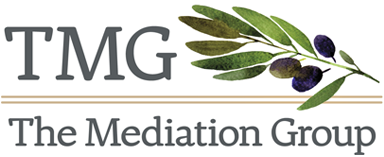Conflict in the Workplace
Conflict at work is unavoidable. It’s often a roadblock on a journey of change and growth. All workplaces experience difficulties in some manner; however, we challenge you to view these occurrences as opportunities. With effective conflict resolution skills and approaches to conflict, you can build stronger relationships and teams, achieve goals and increase productivity, and be more effective.
Workplace conflict shows up in a multitude of ways, and when not dealt with in a timely and productive manner, it can wreak havoc on employee relations and the workplace as a whole. Negative consequences of conflict show up as low morale, high turnover, a decline in productivity, increase in stress levels, poor communication and even gossip. Sometimes deeply imbedded issues can lead to a hostile work environment or other more serious disputes that may require a legal approach to resolution.
Do you recognize any of these common causes of conflict within your workplace?
Poor Communication – There has been a sudden shift between two employees. Rather than working together or speaking directly, they go directly to their supervisor.
Decline in performance or low motivation – Employee A’s performance has been declining over the past couple of months. They are usually great contributors but their reports have had a lot of mistakes lately. Despite your attempts to find out what’s going on, Employee A has been avoidant.
Power struggles/Jockeying for position – Managers of two departments are vying for personnel, finances and other limited resources. Rather than collaborating and accommodating each other’s’ needs, they are competing and undercutting each other.
Ineffective management or leadership – Team members come to each other with contradictory understandings of meeting outcomes and decisions. The team regularly finds themselves rehashing topics they’ve already discussed.
Confusion around job roles and/or expectations – One department just had 4 employees leave their positions. The organization restructured the department and hired 3 new employees. Now, important tasks are going by the wayside.
Personality differences – Employee A sends out detailed agendas and tasks to be completed before a meeting. Employee B never does any of the work and hijacks the meeting. It usually works out fine in the end, but Employee A is starting to get resentful of Employee B.
Now that you’ve identified that your team is operating at a less than optimal level, it’s time to dust off your conflict resolution skills. Outlined below are strategies to keep in mind when addressing a conflict situation or preparing for a difficult conversation.
Stay attentive and address conflict as soon as you notice it. Learn to recognize early signs of conflict. This might look different for different teams depending on the situation and personalities at play, but if you feel like tension is bubbling, chances are your intuition is right. Check in with the individual(s) directly but make sure to plan and prepare for the interaction. It is important to create a culture of open communication and proactive approaches to workplace conflict. This requires trust and respect between team members and with managers.
Engage active listening skills. Try to stay present in the conversation and listen carefully to what the other person is saying. Show that you are following along by summarizing what they’ve shared with you, and encourage them to go deeper by asking questions. Most importantly, stay calm and refrain from assigning blame or casting judgement.
Focus on interests, not positions. Positions are specific claims and are usually outwardly communicated. “I want A, B and C.” Interests are the driving forces or underlying motivations and values. “I want A, B and C because X, Y and Z.” It’s important to understand the other person’s interests as well as your own to be able to foster a successful, long-term solution.
Collaborate. Work together to find a solution that meets both of your interests and that you both can sign on to. This shows your commitment to one another and to the work. You might be surprised at the creative solutions you might find.
Know when to seek outside help. Certain situations might need the assistance of a mediator or neutral third-party consultant (link) to facilitate a conversation and help the parties achieve a resolution. It can be helpful to have an objective outside perspective to diagnose the underlying issues and work with you to formulate a plan of action. No matter how conflict appears it is important to understand the root cause(s) in order to craft an appropriate intervention for a longstanding resolution.
It is important to hone your conflict resolution skills and have strategies in place to respond quickly and effectively to workplace conflict. Sometimes small issues are early warning signs of a deeper or more systemic issues. Remember it is vital to act early, remain calm and listen to one another. Encourage collaboration between the parties and focus on the problem as well as underlying interests. Most importantly, know when to call on outside help.
Call TMG at (617) 277-9232 or send us an email for a no obligation consultation.

